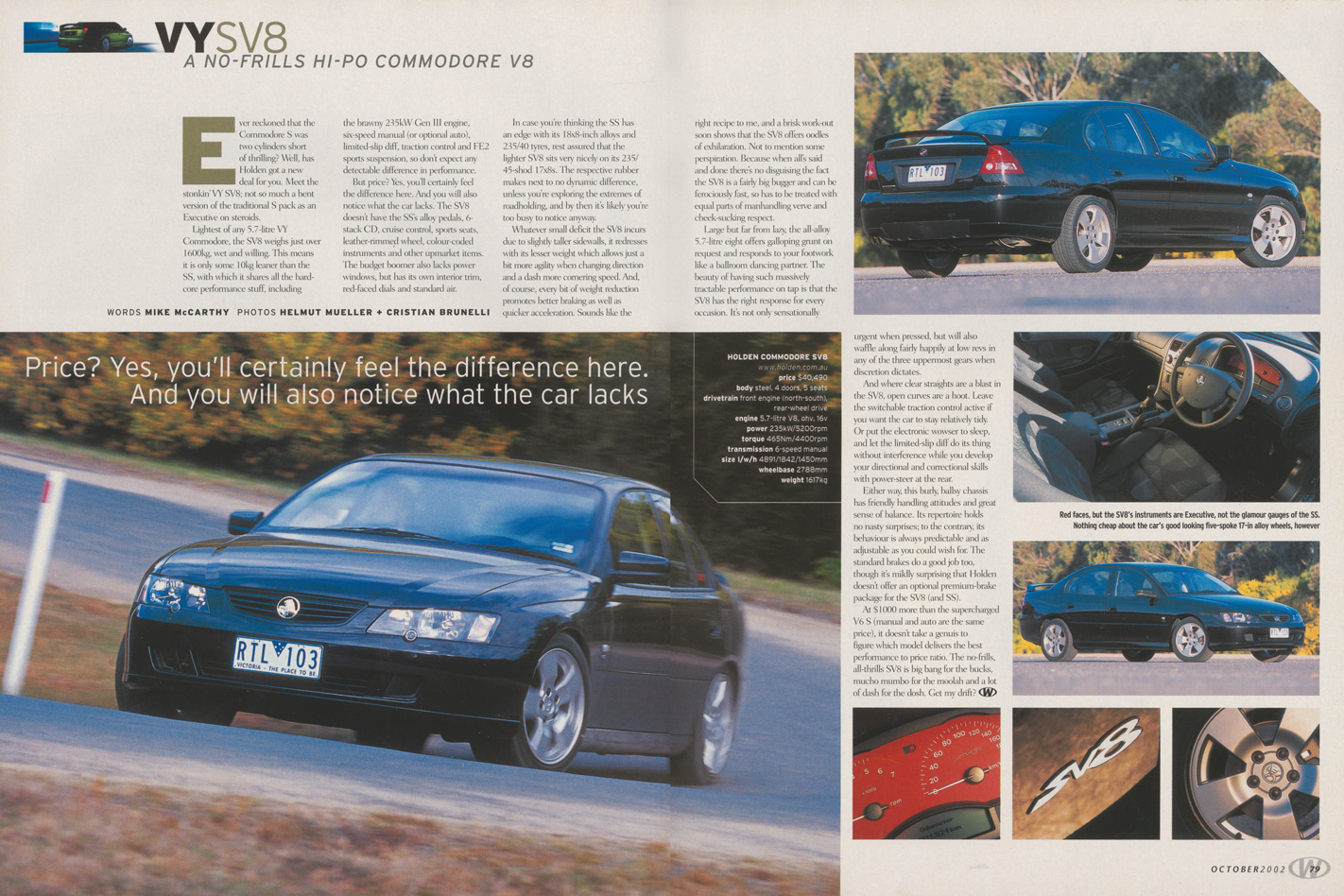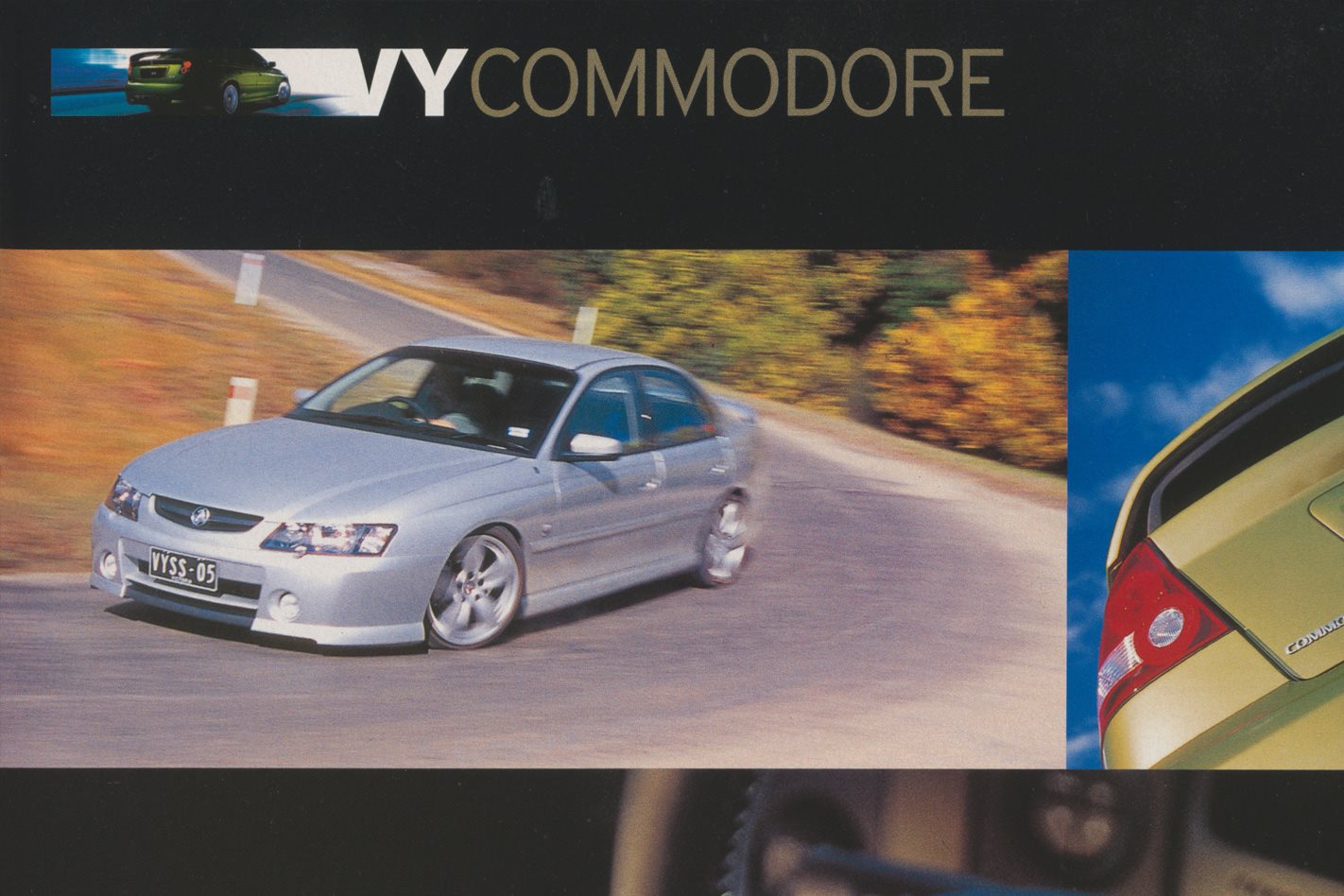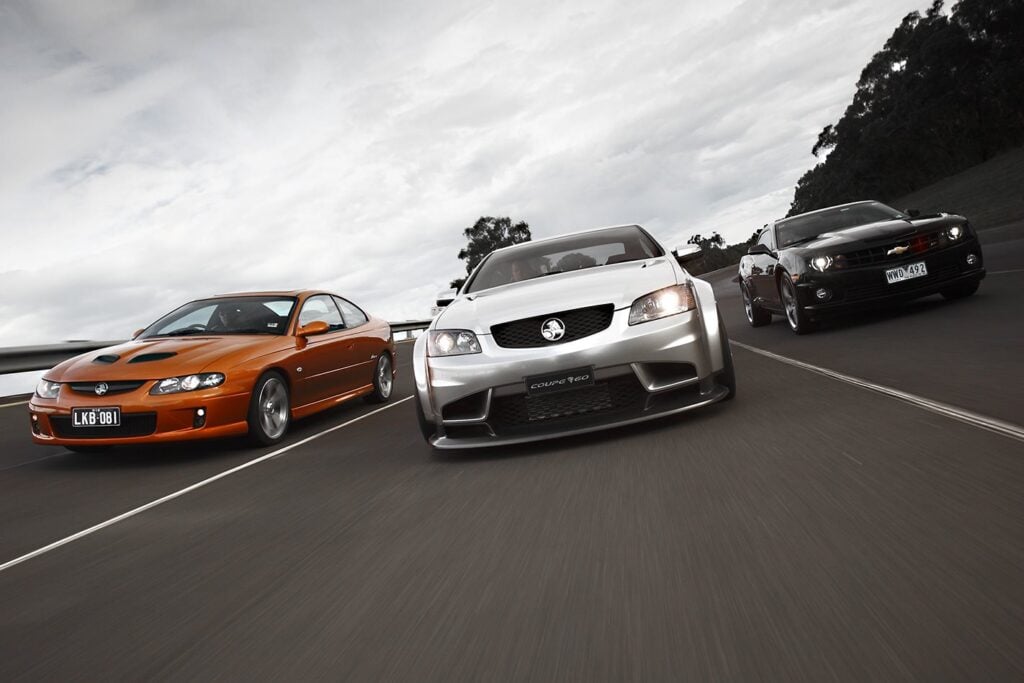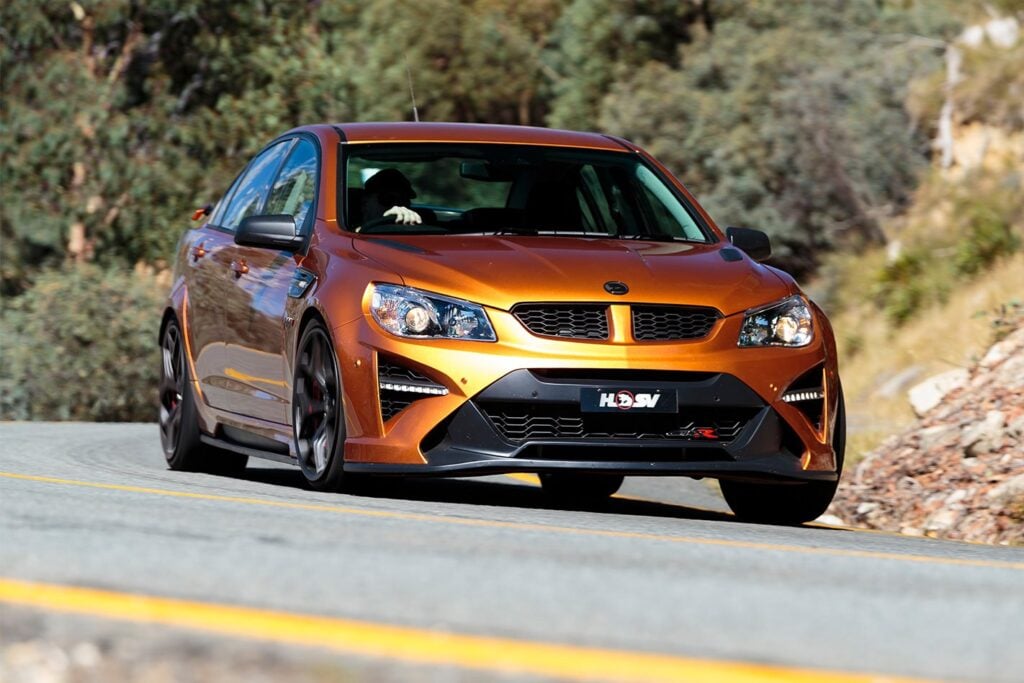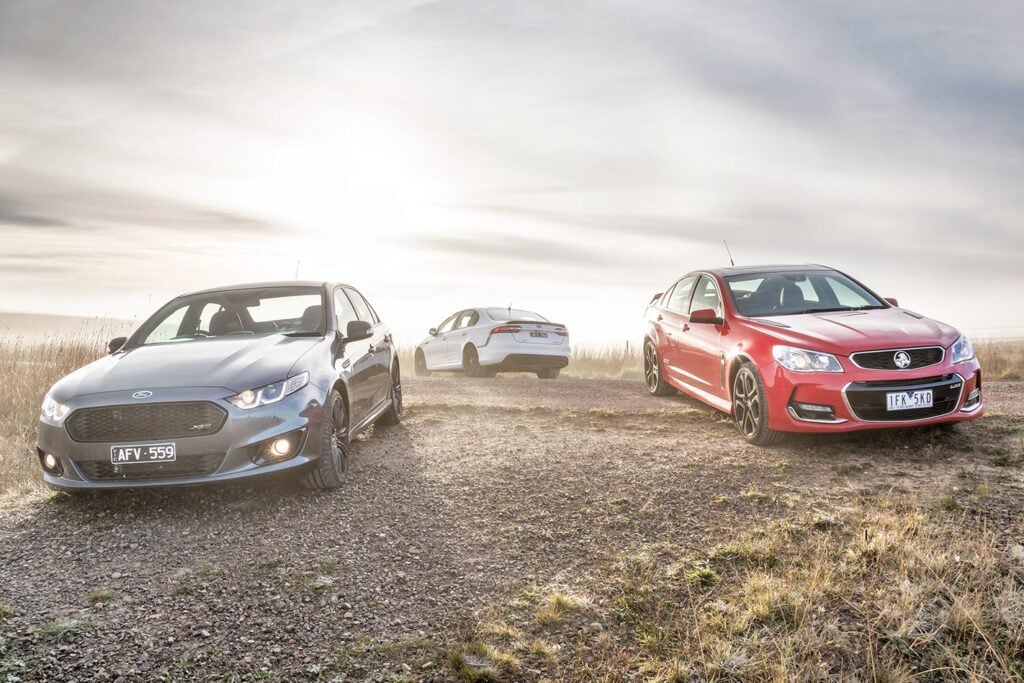lt’s about to get a whole lot tougher for Holden. Confronting a fiercely competitive Ford Falcon for the first time in years, the boys from Fishermans Bend have worked hard on a defence strategy. They’re not going to give up best-seller status without a damn good fight. Here’s what they’ve done to prepare for the coming conflict…
RIGHT now, Holden is indisputably the hottest act in the Australian car business. The lion-badge brand is more popular than at any time in its long history (Holden’s all-time sales record of 1973 is certain to be beaten this year) and Commodore is utterly dominant in the segment with a share nearing 50 percent.
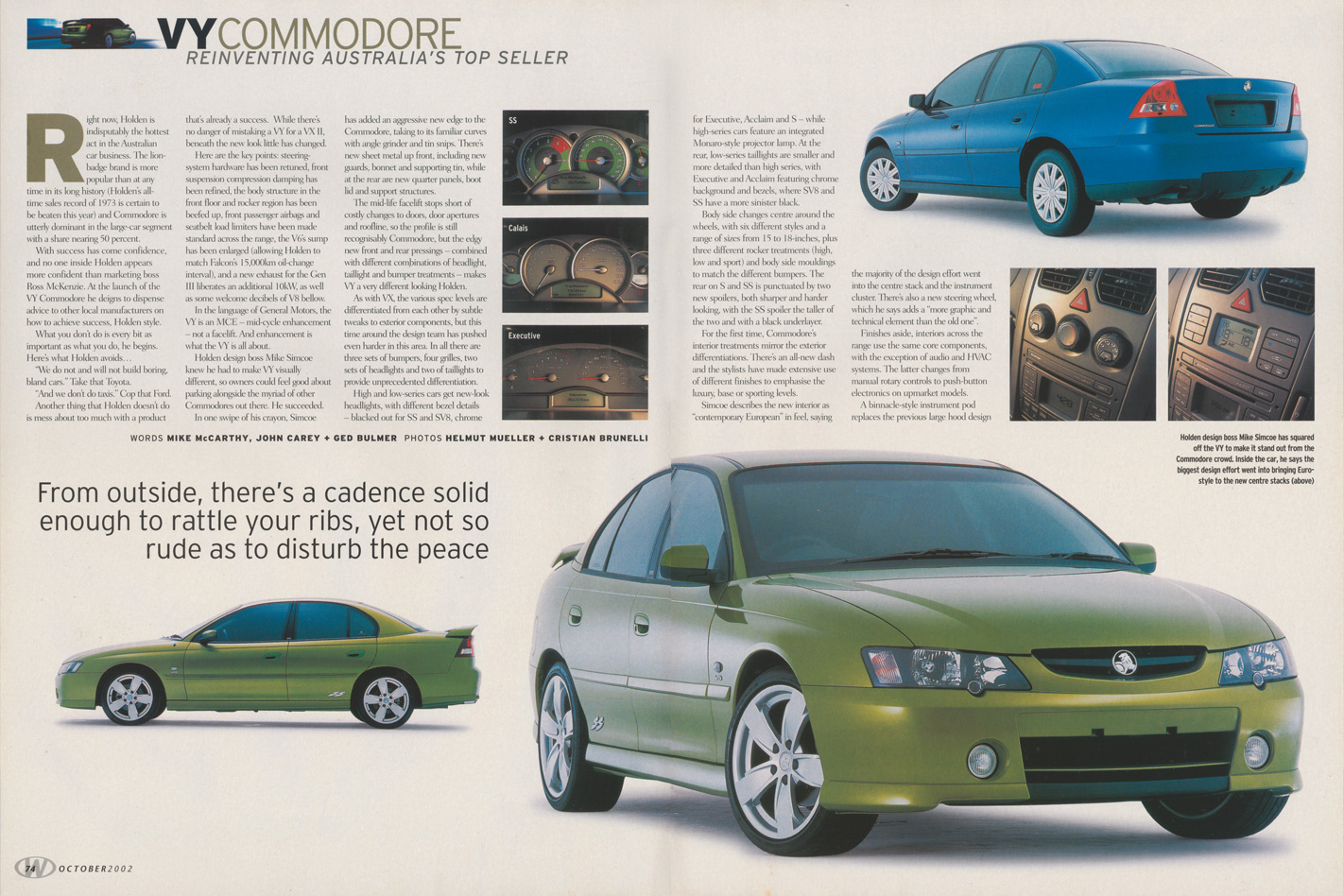
What you don’t do is every bit as important as what you do, he begins. Here’s what Holden avoids …
‘We do not and will not build boring, bland cars.” Take that Toyota.
“And we don’t do taxis.” Cop that Ford.
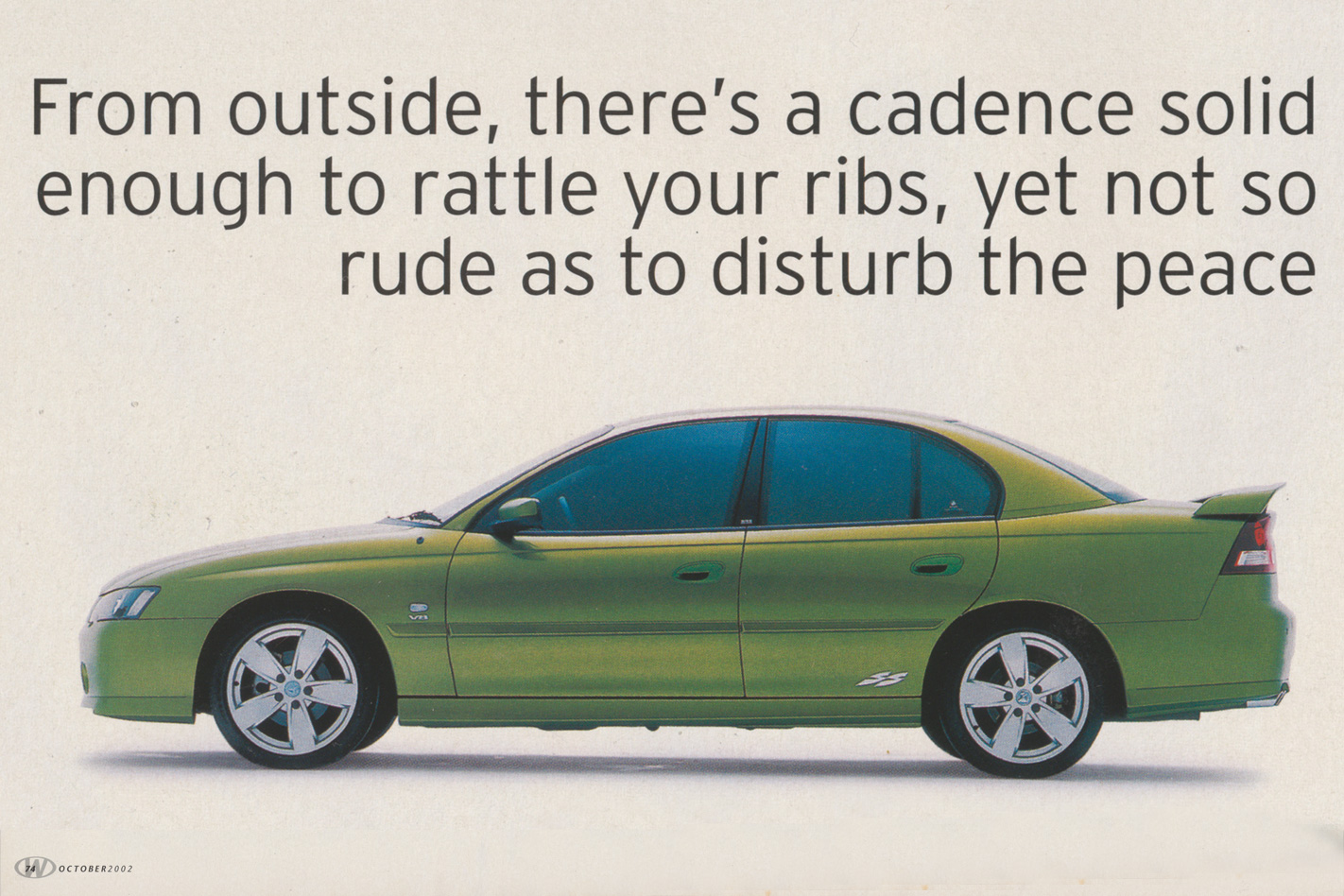
Here are the key points: steering-system hardware has been retuned, front suspension compression damping has been refined, the body structure in the front floor and rocker region has been beefed up, front passenger airbags and seatbelt load limiters have been made standard across the range, the V6’s sump has been enlarged (allowing Holden to match Falcon’s 15,000km oil-change interval), and a new exhaust for the Gen III liberates an additional 10kW, as well as some welcome decibels of V8 bellow.
In the language of General Motors, the VY is an MCE-mid-cycle enhancement – not a facelift. And enhancement is what the VY is all about.
Holden design boss Mike Simcoe knew he had to make VY visually different, so owners could feel good about parking alongside the myriad of other Commodores out there. He succeeded.
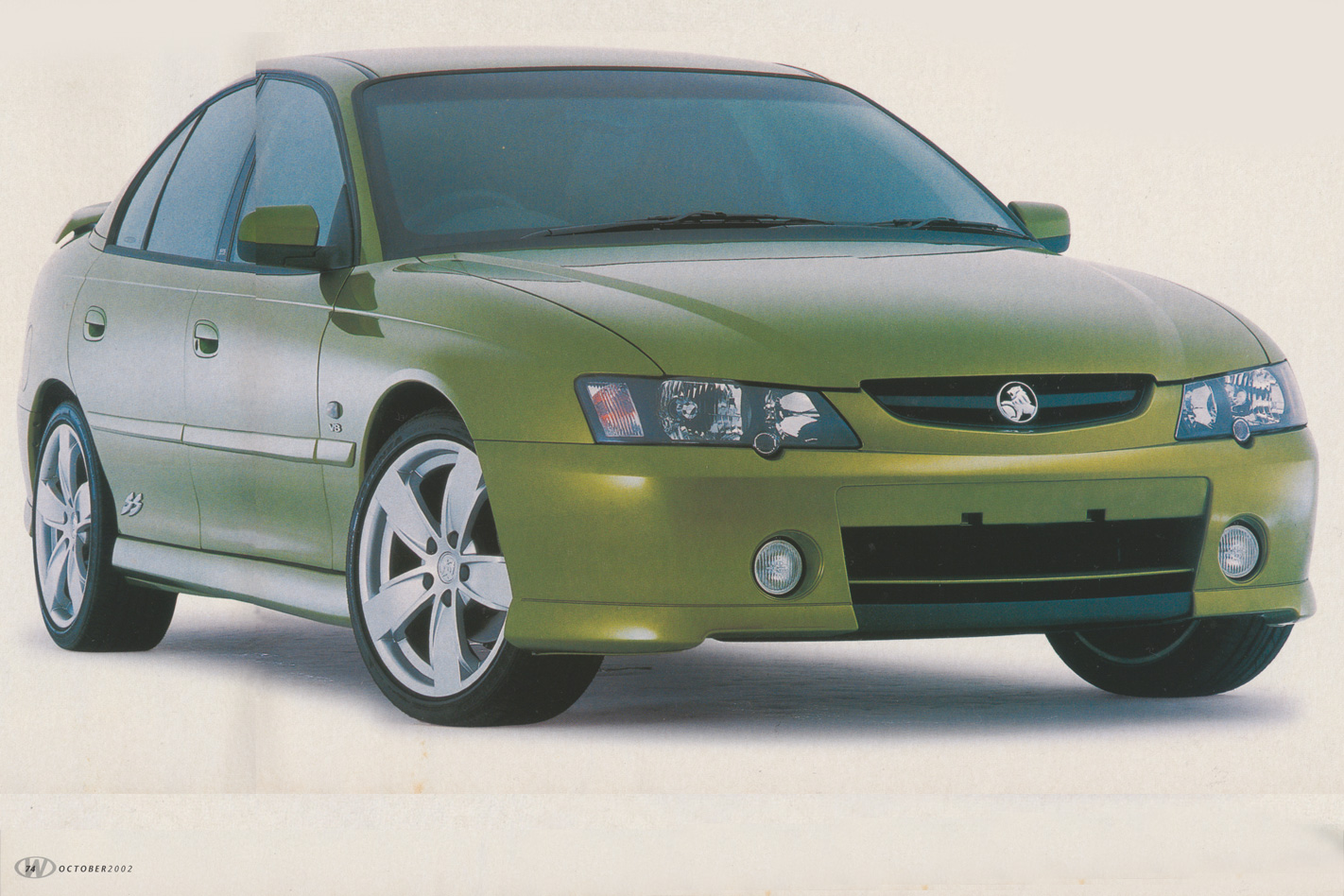
The mid-life facelift stops short of costly changes to doors, door apertures and roofline, so the profile is still recognisably Commodore, but the edgy new front and rear pressings – combined with different combinations of headlight, taillight and bumper treatments – makes VY a very different looking Holden.
As with the VX Commodore, the various spec levels are differentiated from each other by subtle tweaks to exterior components, but this time around the design team has pushed even harder in this area. In all there are three sets of bumpers, four grilles, two sets of headlights and two of taillights to provide unprecedented differentiation.
High and low-series cars get new-look headlights, with different bezel details – blacked out for SS and SV8, chrome for Executive, Acclaim and S – while high-series cars feature an integrated Monaro-style projector lamp. At the rear, low-series taillights are smaller and more detailed than high series, with Executive and Acclaim featuring chrome background and bezels, where SV8 and SS have a more sinister black.
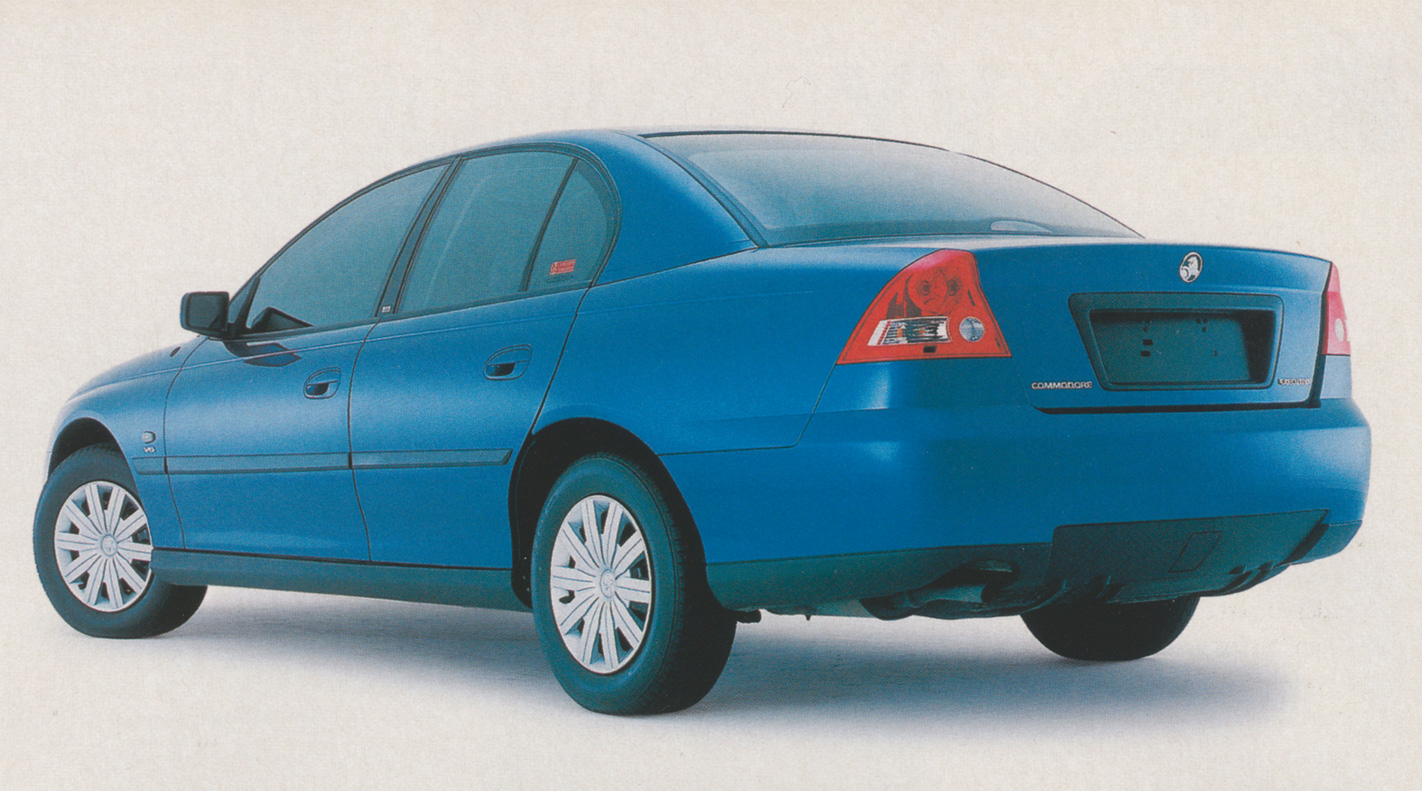
For the first time, Commodore’s interior treatments mirror the exterior differentiations. There’s an all-new dash and the stylists have made extensive use of different finishes to emphasise the luxury, base or sporting levels.
Simcoe describes the new interior as “contemporary European” in feel, saying the majority of the design effort went into the centre stack and the instrument cluster. There’s also a new steering wheel, which he says adds a “more graphic and technical element than the old one”.
Finishes aside, interiors across the range use the same core components, with the exception of audio and HVAC systems. The latter changes from manual rotary controls to push-button electronics on upmarket models.
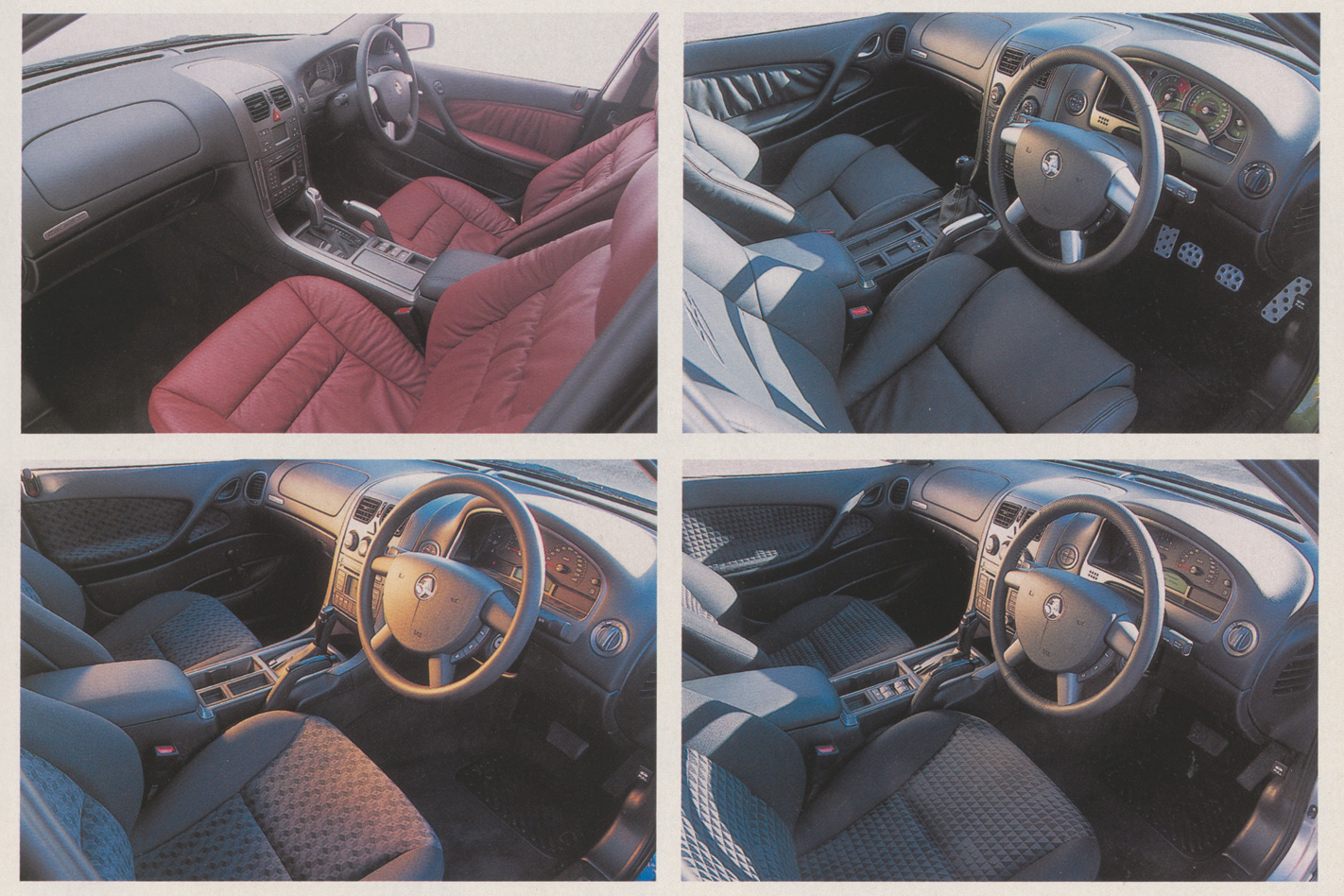
The carry-over door trims are clad in a new geometrically themed fabric, as are the seats. Finally, there’s a new woven headlining material, designed to give a more “plush and technical” feel.
While VY was a major project for Holden’s design department, the engineering program was restricted to making minor improvements.
Holden, obviously sick of reading that Commodore’s steering isn’t as good as Falcon’s, attended to the criticism. The idea was to chase the elasticity out of the system. ‘We went to a stiffer torsion bar,” says chassis engineer Colin Sichlau. “Significantly stiffer. I think it’s about 20 percent, 25 percent. Then we revised the valve to go with it.”
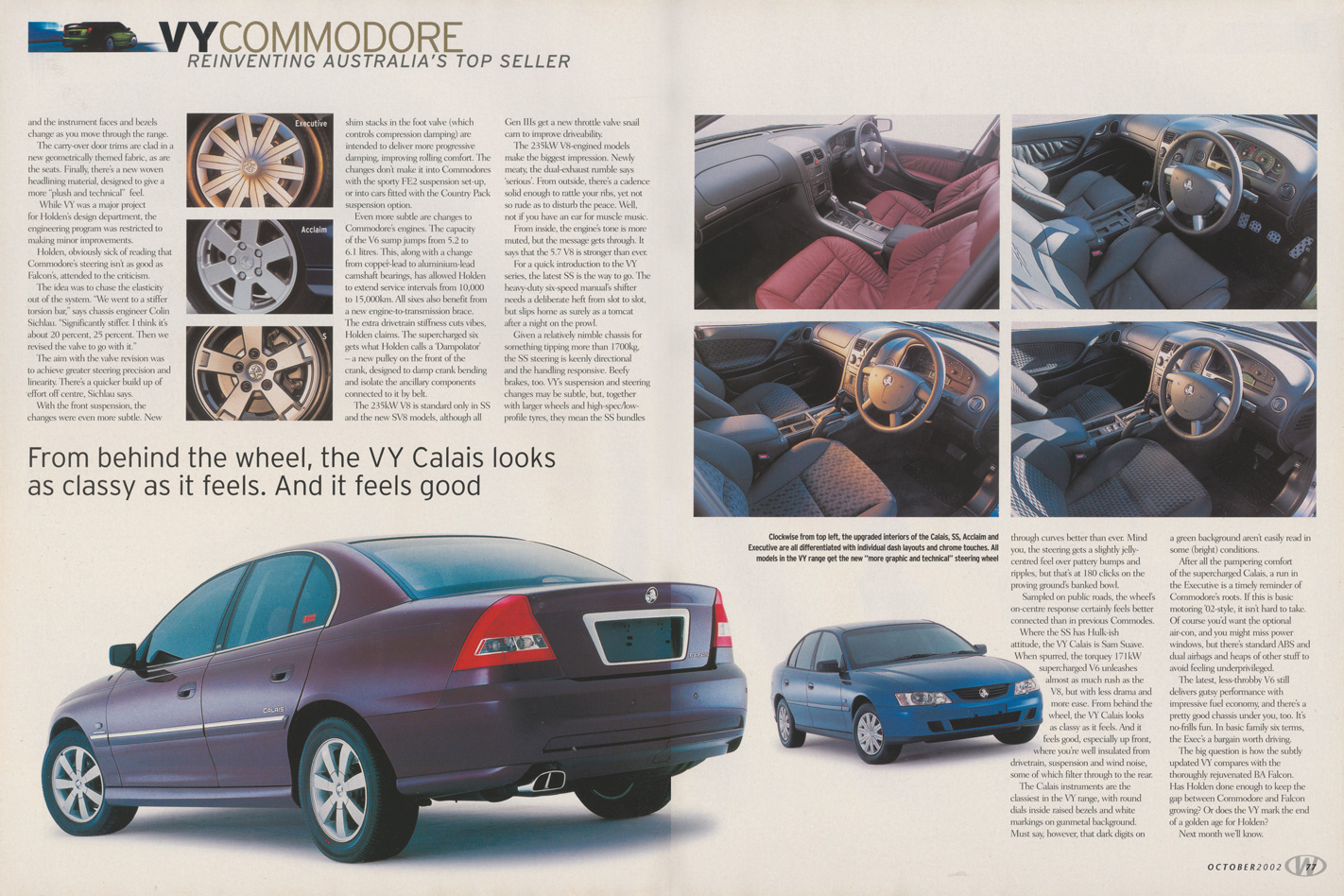
With the front suspension, the changes were even more subtle. New shim stacks in the foot valve (which controls compression damping) are intended to deliver more progressive damping, improving rolling comfort. The changes don’t make it into Commodores with the sporty FE2 suspension set-up, or into cars fitted with the Country Pack suspension option.
Even more subtle are changes to Commodore’s engines. The capacity of the V6 sump jumps from 5.2 to 6.1 litres. This, along with a change from copper-lead to aluminium-lead camshaft bearings, has allowed Holden to extend service intervals from 10,000 to 15,000km. All sixes also benefit from a new engine-to-transmission brace.
The extra drivetrain stiffness cuts vibes, Holden claims. The supercharged six gets what Holden calls a ‘Dampolator’ – a new pulley on the front of the crank, designed to damp crank bending and isolate the ancillary components connected to it by belt.
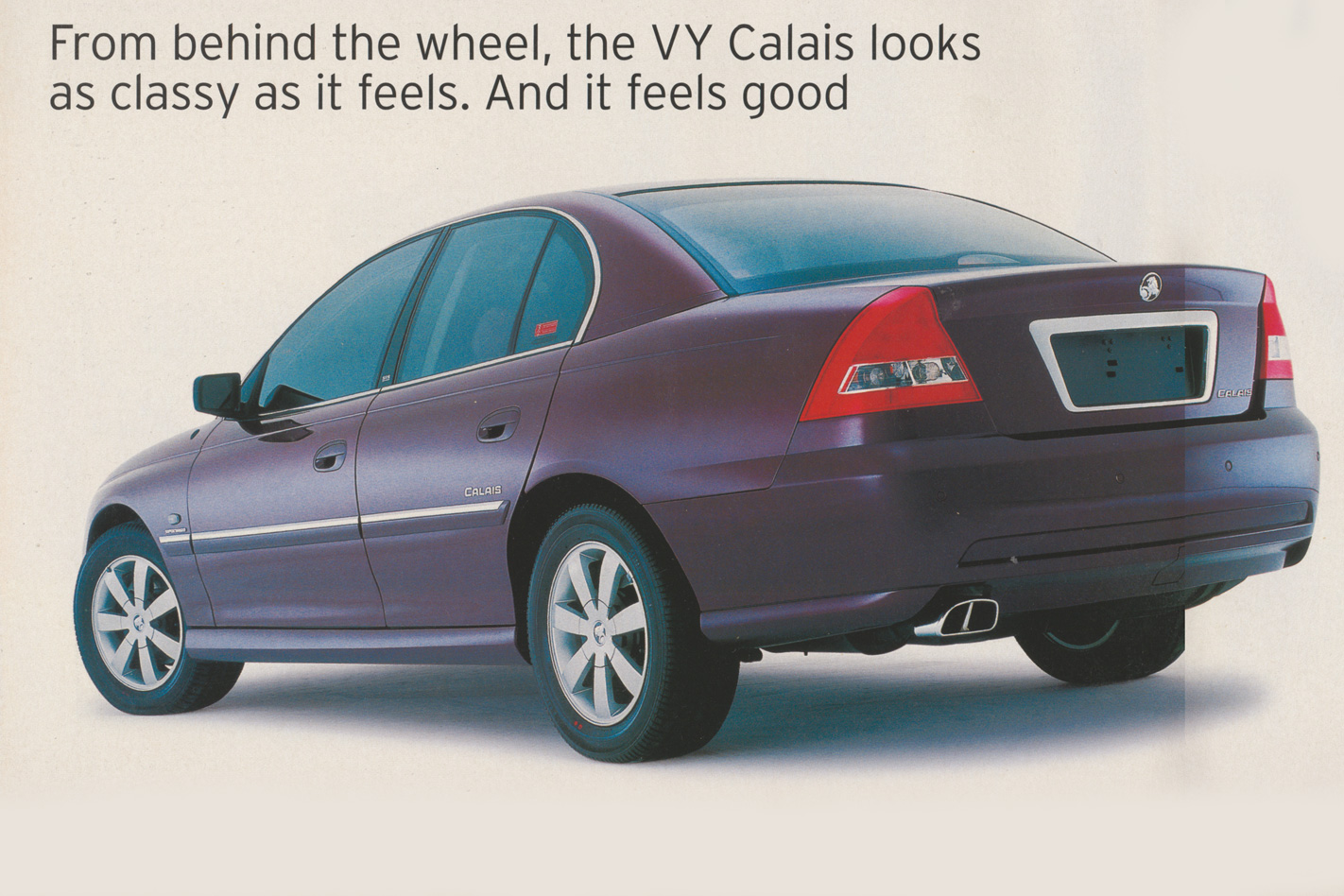
The 235kW V8-engined models make the biggest impression. Newly meaty, the dual-exhaust rumble says ‘serious’. From outside, there’s a cadence solid enough to rattle your ribs, yet not so rude as to disturb the peace. Well, not if you have an ear for muscle music.
From inside, the engine’s tone is more muted, but the message gets through. It says that the 5. 7 V8 is stronger than ever. For a quick introduction to the VY series, the latest SS is the way to go. The heavy-duty six-speed manual’s shifter needs a deliberate heft from slot to slot, but slips home as surely as a tomcat after a night on the prowl.
Given a relatively nimble chassis for something tipping more than 1700kg, the SS steering is keenly directional and the handling responsive. Beefy brakes, too. VY’s suspension and steering changes may be subtle, but, together with larger wheels and high-spec, low-profile tyres, they mean the SS bundles through curves better than ever. Mind you, the steering gets a slightly jelly-centred feel over pattery bumps and ripples, but that’s at 180 clicks on the proving ground’s banked bowl.

When spurred, the torquey 171kW supercharged V6 unleashes almost as much rush as the V8, but with less drama and more ease. From behind the wheel, the VY Calais looks as classy as it feels. And it feels good, especially up front, where you’re well insulated from drivetrain, suspension and wind noise, some of which filter through to the rear.
The Calais instruments are the classiest in the VY range, with round dials inside raised bezels and white markings on gunmetal background. Must say, however, that dark digits on a green background aren’t easily read in some (bright) conditions.
After all the pampering comfort of the supercharged Calais, a run in the Executive is a timely reminder of Commodore’s roots. If this is basic motoring ’02-style, it isn’t hard to take.
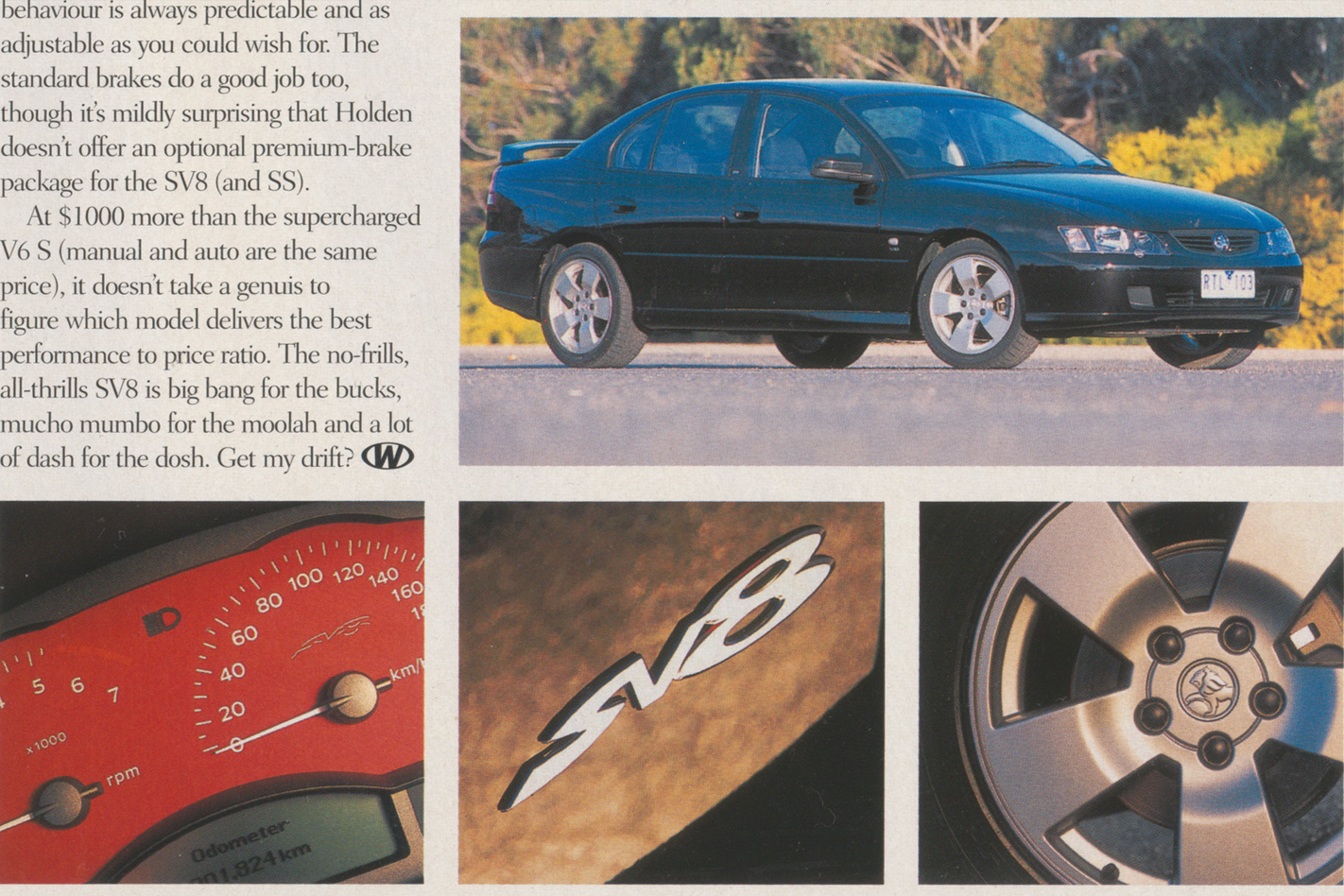
The latest, less-throbby V6 still delivers gutsy performance with impressive fuel economy, and there’s a pretty good chassis under you, too. It’s no-frills fun. In basic family six terms, the Exec’s a bargain worth driving.
The big question is how the subtly updated VY compares with the thoroughly rejuvenated BA Falcon.
Has Holden done enough to keep the gap between Commodore and Falcon growing? Or does the VY mark the end of a golden age for Holden?
Next month we’ll know.
